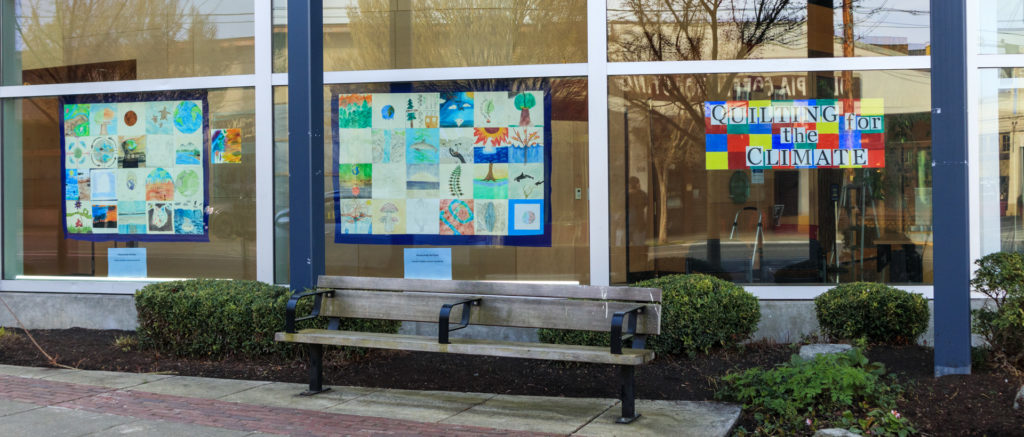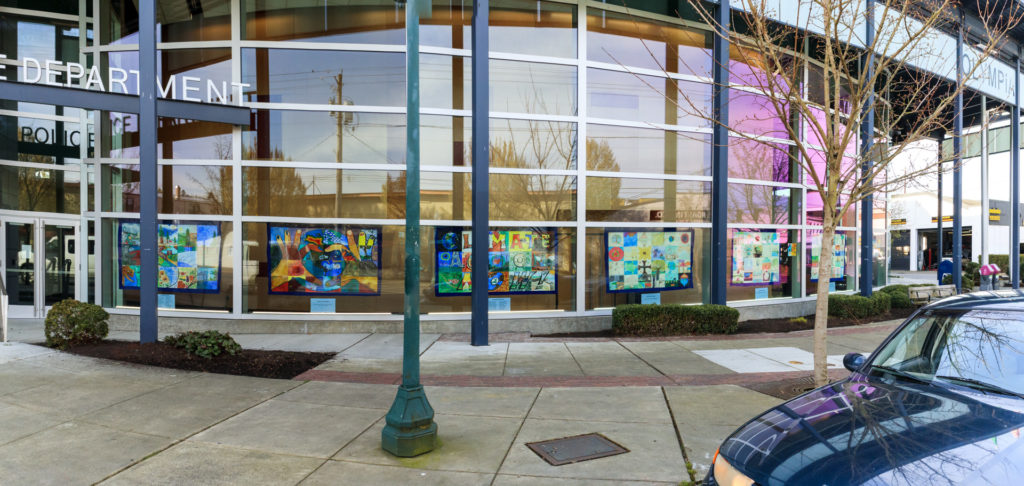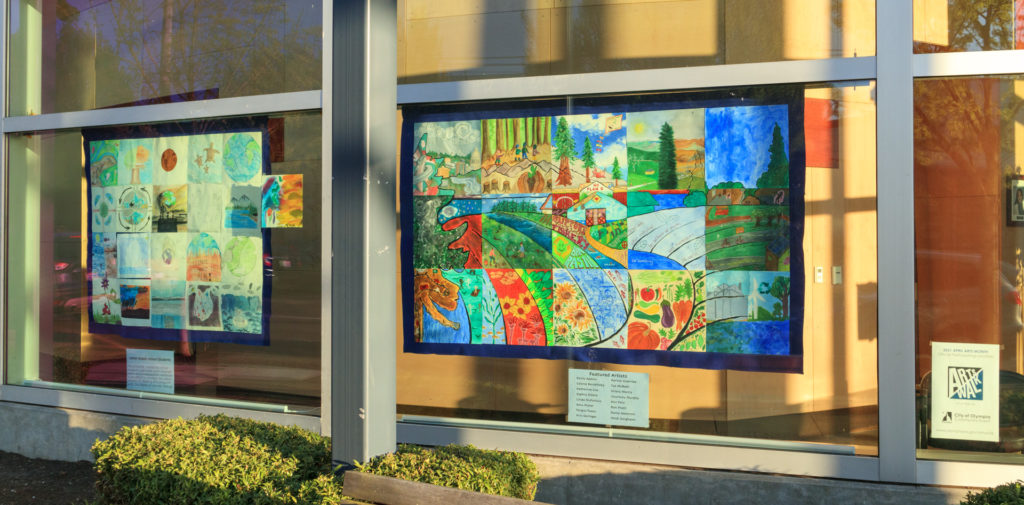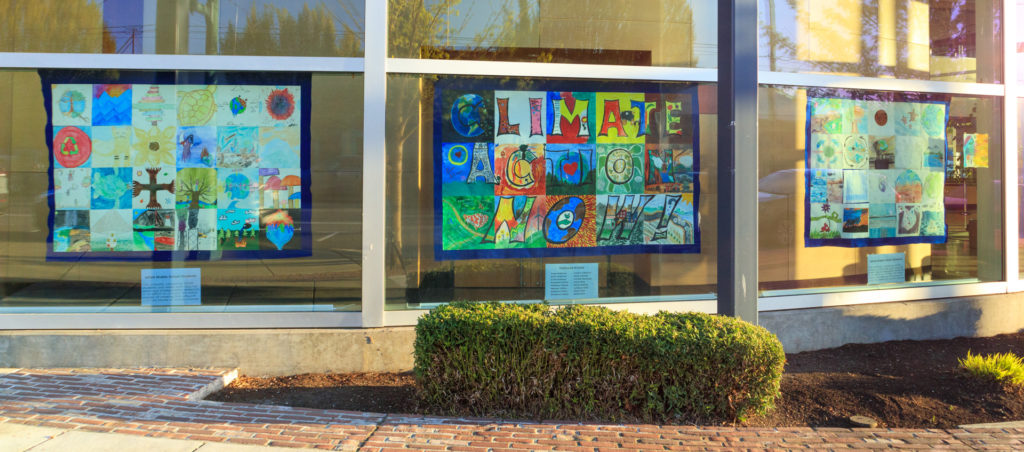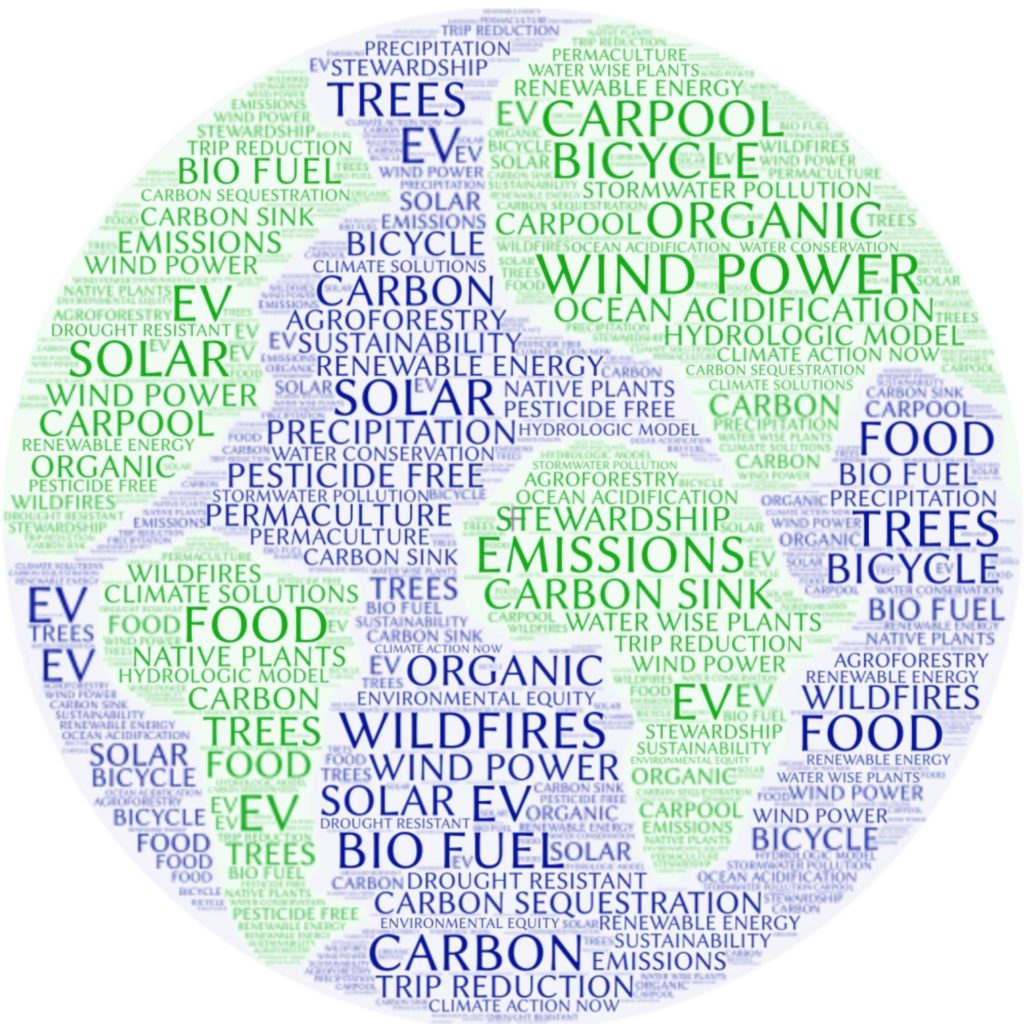Quilting for the Climate: The Climate Quilt Exhibit
Join us for an innovative community display of art reflecting climate awareness and solutions. In this inspiring exhibit, over 100 community members painted quilt squares to express how we can lower our collective carbon footprint. Quilts have been used as a way to share messaging and create change in America for hundreds of years, from abolition in the 19th century to equality in the 20th. This year, we have compiled individual art pieces and constructed them into quilts to tell a story about climate action in Thurston County.
Many things contribute to climate change including our everyday actions. This means the solution lies with each of us to do our part to lower our collective carbon footprint like reconsidering our transportation, our food supply, and our energy use.
Through art, we bring each individual’s creative reflection on climate change into one meaningful work, pieced together and on display through Spring Arts Month in the front windows of Olympia’s City Hall located at 601 E 4th Ave. In keeping with State guidelines, the annual Arts Walk exhibit will be displayed for viewing from outside city hall windows.
The Challenge of Climate Change
When we burn fossil fuels like coal, oil, and natural gas for energy, we release carbon dioxide (CO2) gas into the atmosphere. As CO2 builds up in the atmosphere, it acts like a blanket, trapping heat that would otherwise escape, warming our planet and disrupting Earth’s climate. Carbon dioxide and other heat-trapping gasses are often referred to as greenhouse gases.
The impacts of climate change are already affecting Olympia and greater Thurston County. We are experiencing rising temperatures, increased flooding due to intense storm events and sea level rise. Average annual temperatures are expected to continue to rise throughout the 21st century with hotter and drier summers, warmer and wetter winters, and more intense storms and rainfall.
Climate change can even impact local water quality. As our planet warms, more moisture evaporates from land and water, leading to more intense storms that can overwhelm our stormwater systems and cause flooding. Rapid runoff from these storms scour and carry pollutants from hard surfaces like roadways and parking lots into our streams, lakes and Puget Sound, degrading water quality and important habitat for fish and wildlife.
The consequences of climate change are serious, and it is not too late to act! When we all take steps to reduce our own carbon emissions and work together to reduce our reliance on fossil fuels, we make a difference!
Taking Action – Ideas for at home and in your community
How do we reduce our carbon emissions? Did you know that most of the emissions in Thurston County come from driving our cars and powering, heating, and cooling our buildings?
Here are some ideas for how you can help reduce greenhouse gas emissions associated with transportation.
- Bike or walk if your destination is nearby.
- If you need to drive somewhere, try to carpool or take public transit.
- When it is time to replace your vehicle, consider purchasing an electric vehicle.
- Join the growing community of people who have made the commitment to fly less or even give it up completely.
- Buy food that is grown locally. This not only reduces the transportation needed to ship food, it supports local farmers and the local economy.
- Let your elected officials know you’d like to see more options for biking, walking, and public transportation.
Here are some ideas for how you can help reduce greenhouse emissions associated with buildings and energy.
- Install solar panels at your home, school, or business. There are often rebates available for solar panel installation.
- Invest in energy efficiency upgrades to reduce the amount of power needed to heat and cool your home.
- Let your elected officials know you’d like to make it easier to purchase renewable energy and increase the energy efficiency of homes and businesses.
Other ideas you can do to reduce greenhouse gas emissions are:
- Eating a plant-based diet: Changing to a plant-based diet or eating a plant-based diet even a few times a week can reduce greenhouse gas emissions associated with food production.
- Eat local, in season and organic: Eating local and in season reduces transportation for shipping food. Organic farming has less potential to create greenhouse gasses, is more sustainable, enhances the soil and reduces pollution.
- Waste less food: When you buy too much food and throw it away, you also waste all the energy that was used to produce it.
- Plant shrubs and trees: Trees clean air, cool temperatures, help prevent stormwater pollution and provide habitat for fish and wildlife. Retaining and planting native trees and shrubs reduces the carbon dioxide from the atmosphere as it is absorbed by plants as part of the biological carbon cycle.
- Reduce your digital footprint: The internet and cloud storage are really many large machines powered by massive amounts of electricity. What you can do: Use less electricity- turn off the TV, radio, laptop/tablets and even your phone when not in use. Reduce the number of non-essential emails and text messages, including emojis 😊.
- Volunteer opportunities: Volunteer with local community organizations such as Stream Team and local parks to plant native trees and shrubs restoring natural areas.
Finished Quilts
